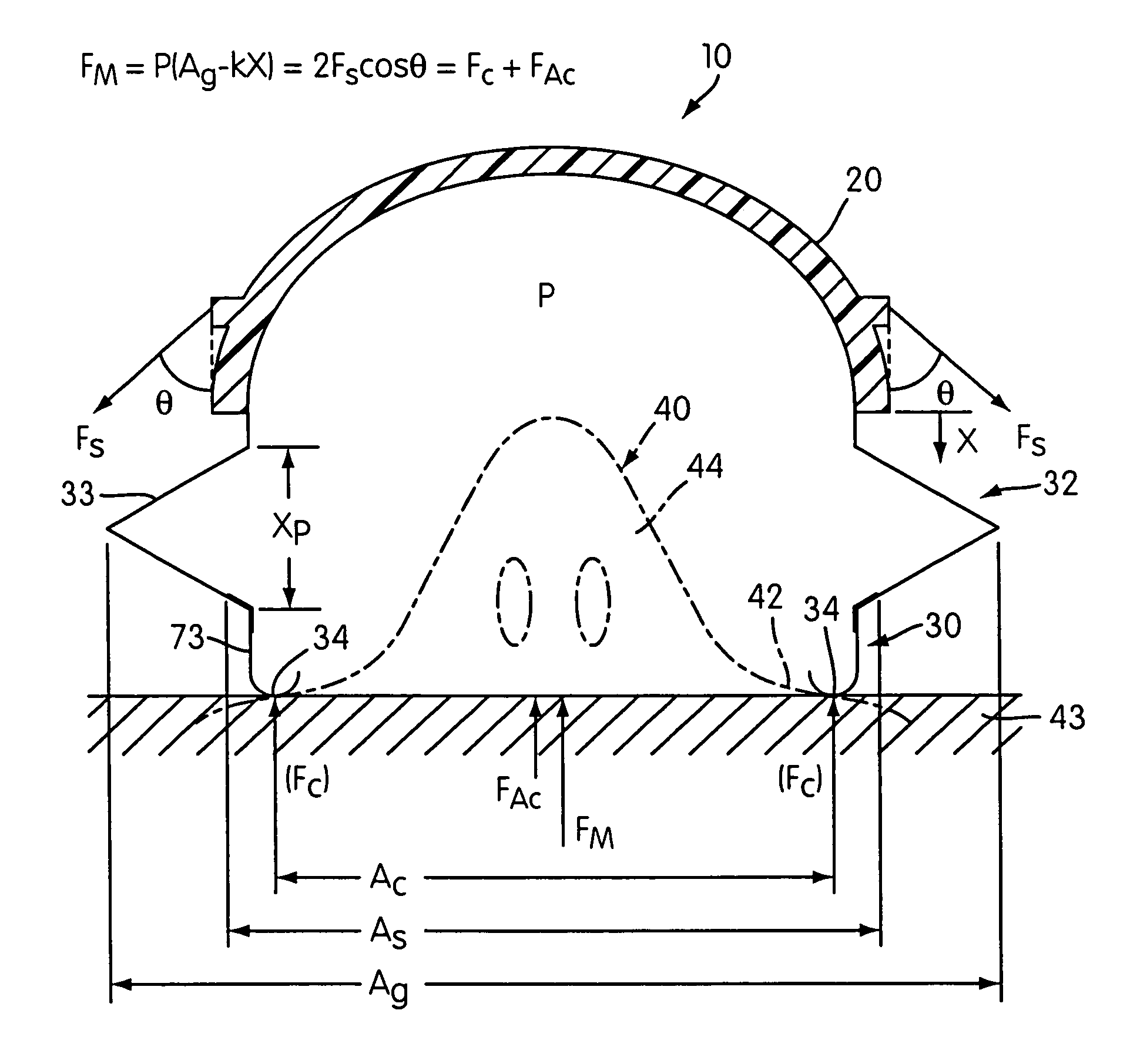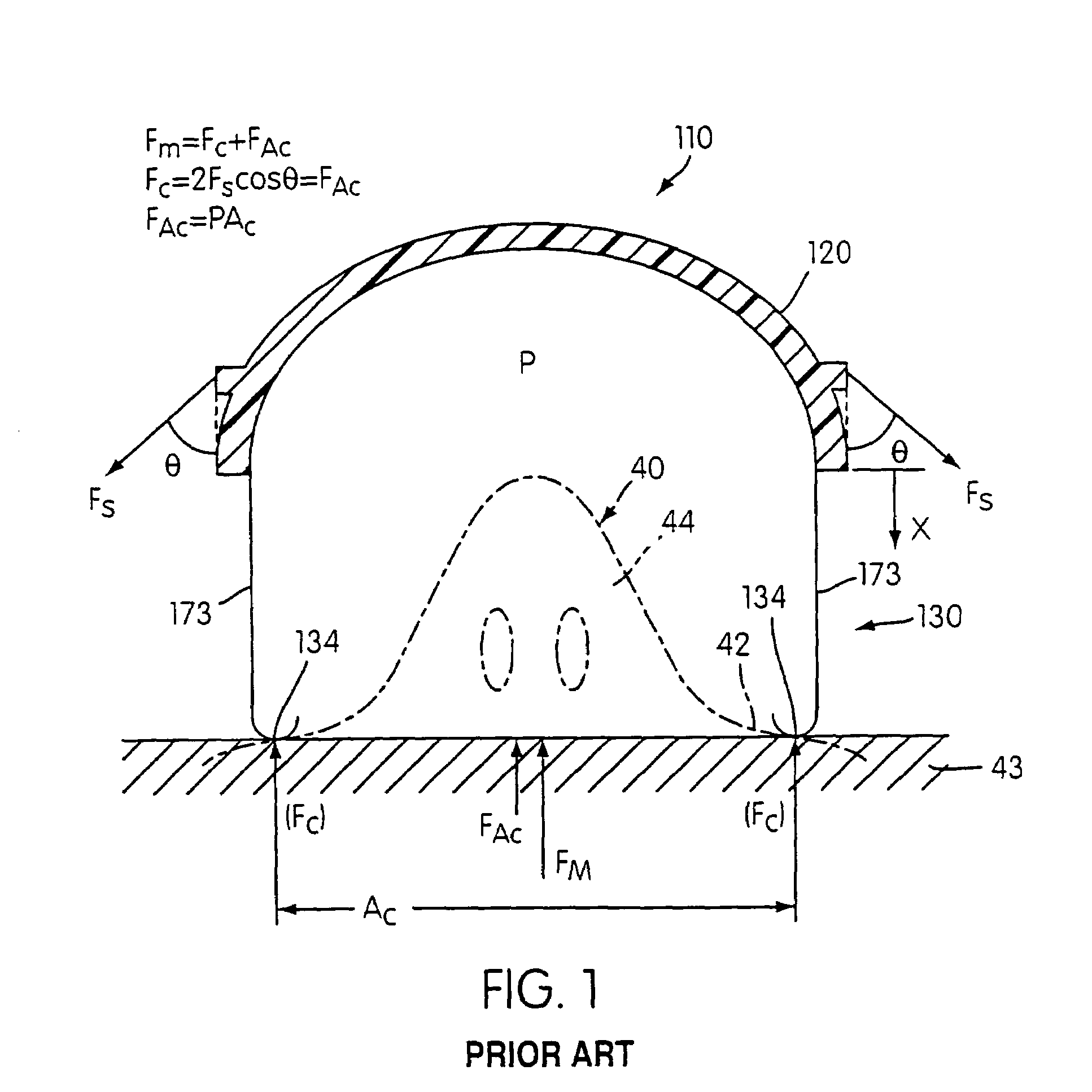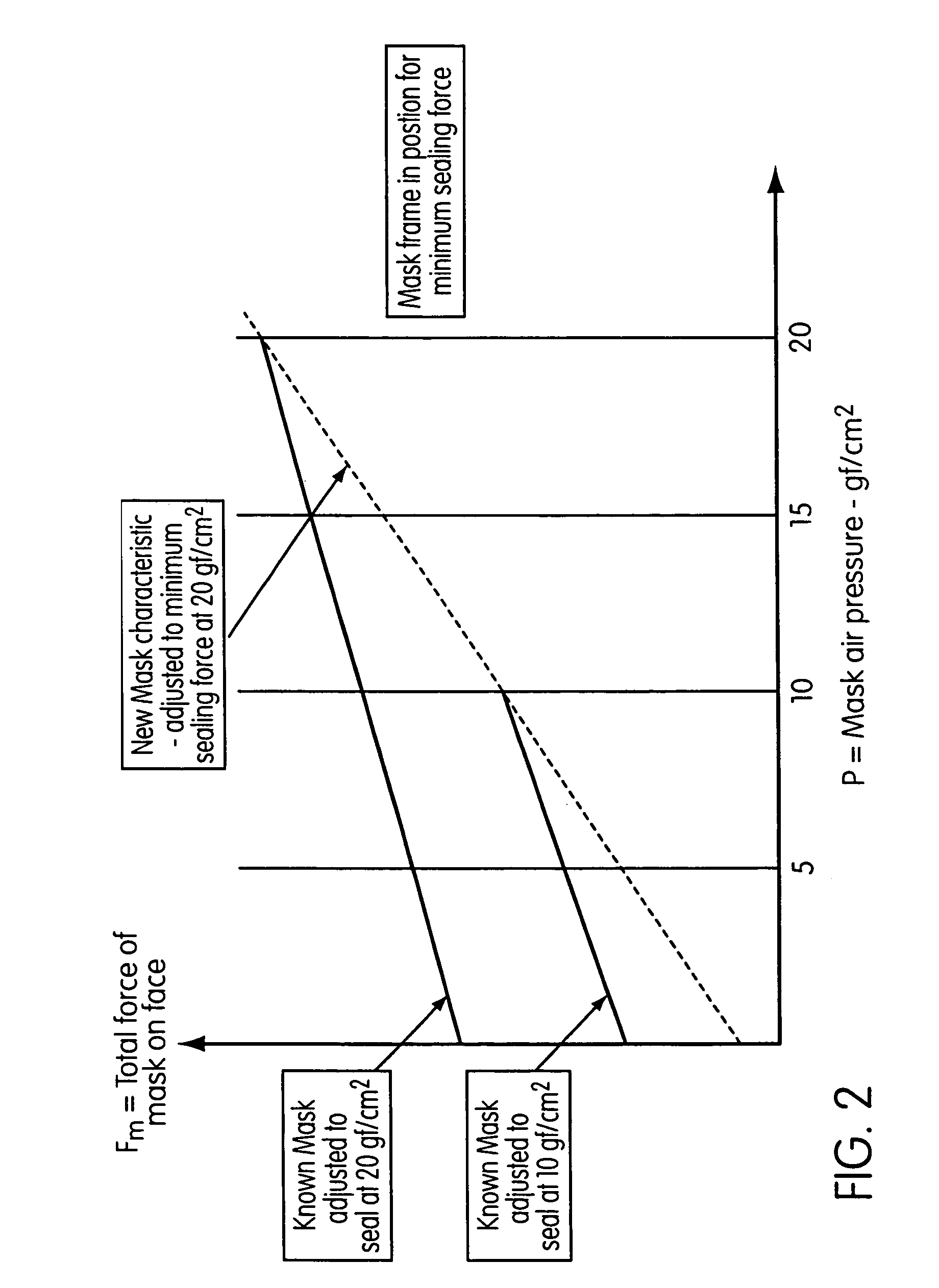Mask with gusset
a mask and gusset technology, applied in the field of masks with gussets, can solve the problems of reducing the desired air pressure in the mask, increasing noise, reducing the effectiveness of therapy, and compliance with therapy, and achieves the effects of enhancing mechanical flexibility, ensuring safety, and ensuring patient comfort and complian
- Summary
- Abstract
- Description
- Claims
- Application Information
AI Technical Summary
Benefits of technology
Problems solved by technology
Method used
Image
Examples
Embodiment Construction
[0044]A first embodiment of the respiratory mask 10 of the present invention is shown in FIGS. 4–9. The mask 10 includes a generally rigid shell 20 having an air tube 22 for connecting to a pressurized air supply 23. A gusset portion 32 is attached to the shell 20 in a known manner such as gluing or mechanical fastening. The gusset portion 32 acts as a suspension mechanism for a cushion 30 and includes a flexible gusset sidewall 33. A partial sectional view of the gusset portion 32 is shown in FIG. 6. In this embodiment, the gusset sidewall 33 has a generally uniform thickness and the gusset portion 32 has a generally triangular cross-section when not exposed to mask pressure. However, in this embodiment, the flexible sidewall 33 will balloon out when the mask 10 is pressurized to take on the more rounded cross-section shown in FIG. 7. The FIG. 8 end view of the gusset portion 32 shows that the gusset has a generally triangular outline to conform with the shape of the cushion 30 and...
PUM
 Login to View More
Login to View More Abstract
Description
Claims
Application Information
 Login to View More
Login to View More - R&D
- Intellectual Property
- Life Sciences
- Materials
- Tech Scout
- Unparalleled Data Quality
- Higher Quality Content
- 60% Fewer Hallucinations
Browse by: Latest US Patents, China's latest patents, Technical Efficacy Thesaurus, Application Domain, Technology Topic, Popular Technical Reports.
© 2025 PatSnap. All rights reserved.Legal|Privacy policy|Modern Slavery Act Transparency Statement|Sitemap|About US| Contact US: help@patsnap.com



